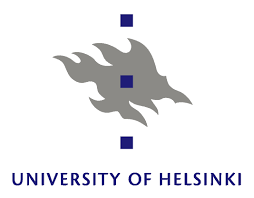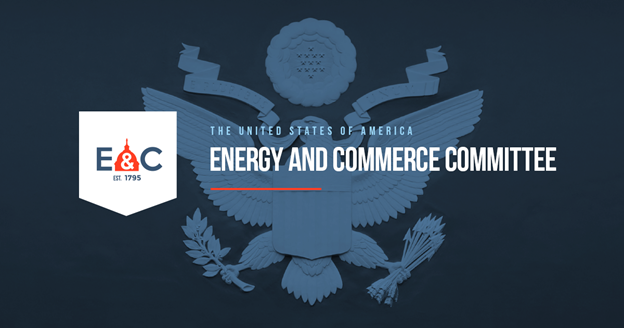The Ion Exchange for Nuclear Waste Treatment and for Recycling is a research group at the Department of Chemistry at the University of Helsinki. Recently, they have been working on materials that can be used to remove radioactive contamination from water.
The material that they are investigating is electospun sodium titanate. Electrospinning is a way to produce fibers by using electric force to draw charged threads out of polymer solutions or polymer melts. The fibers produced are hundreds of nanometers in size. This process does not require the use of chemicals to coagulate the solution or high temperatures to produce solid threads from a solution.
Synthetic sodium titanate is known to be a good material to use for the removal of strontium from water. It is produced and used in granular form in industrial quantities for treating radioactively contaminated waste water. The waste water at the Fukushima nuclear power plant is currently being decontaminated with granular sodium titanate
Sodium titanate is employed in ion exchange systems. In ion exchange, water contaminated with ions of an unwanted material is run through a column full of ion exchange materials. In the remediation of strontium contaminated water, the sodium in the sodium titanate replaces the strontium ion which bonds to other opposite charged ions in the electrospun sodium titanate fibers which can then be removed from the water and disposed of.
The benefit of using electrospun sodium titanate fibers is that the speed of the ion exchange process is faster than standard granular sodium titanate ion exchange and the electrospun sodium titanate is more efficient. Because less of the electrospun sodium titanate is needed than running the process with granular sodium titanate, the resulting volume of solid radioactive waste is smaller and more easily disposed of.
The original ion exchange process was pioneered by Jukka Lehto and Risto Harjula from the University of Helsinki. The electrospinning equipment at the University of Helsinki was designed and built by the Centre for Excellence for Atomic Layer Deposition. The team leader was Mikko Ritala. It was a simple process to create electrospun sodium titanate with the equipment. The researchers tested the fibers that were produced and found that the ion exchange process using the fibers behaved in a chemically similar way to the process using granular sodium titanate.
This is a major advancement in the treating of strontium contaminated waste water. Produced by a simple process, the electrospun sodium titanate is faster and more effective than the granular sodium titanate and it leaves less radioactive waste to be disposed of. Ultimately, it is a better and cheaper method of waste water remediation.
With the huge volume of waste water stored at Fukushima and with more waste water being generated every day, this new better cheaper method of treating that water to remove strontium is a very welcome development. There are many bodies of water contaminated with strontium scatter around the world. It is difficult if not impossible to prevent this water from leaking out of its current location into ground water and surface water. There are many places where this new remediation method could be usefully applied.
Blog
-

Radioactive Waste 343 – University Of Helsinki Researchers Utilize Electrospun Sodium Titanate To Remove Strontium From Contaminated Water
-

Geiger Readings for Jun 27, 2018
Ambient office = 109 nanosieverts per hour
Ambient outside = 97 nanosieverts per hour
Soil exposed to rain water = 100 nanosieverts per hour
Carrot from Central Market = 87 nanosieverts per hour
Tap water = 112 nanosieverts per hour
Filter water = 101 nanosieverts per hour
-

Nuclear Fusion 48 – Max Planck Institute for Plasma Physics’ Wendelstein 7-X Stellarator Sets New Fusion Product Records
The Max Planck Institute of Plasma Physics is a German physics institute dedicated to the exploration of plasma physics for potential use in the creation of commercial fusion power reactors. It is an institute of the Max Planck Society and has two sites; one in Garching near Munich and one in Greifswald. It is host to several large experimental devices including the experimental tokamak ASDEX Upgrade, the experimental stellarator Wendelstein 7-AS, the experimental stellarator Wendelstein 7-X, and a tandem accelerator.
It is designed to advance stellarator technology and evaluate the major components of a possible future fusion power reactor. As of 2015, it was the biggest stellarator in the world. The researchers are hoping to be able to demonstrate thirty minutes of continuous operations, a crucial milestone on the way to commercial fusion power. Earlier tests of the Wendelstein 7-X resulted in world records for highest temperature, greatest plasma density, longest pulses and fusion products.
The term “fusion product” is the mathematical product of the temperature of a plasma, the density of the plasma and the energy confinement times. This product is a measure of how close a device is to achieving a nuclear fusion reaction.
A stellarator is a device that is designed to confine hot plasma with magnetic fields for the purpose of creating a controlled nuclear fusion reaction. In the toroidal fusion machines called tokamaks, instabilities develop in the donut shaped confinement chamber. The stellarator was designed to eliminate such instabilities by creating magnetic fields that force the particles traveling around the circular containment vessel to travel in twisted paths. The “magnetic cage” of the Wendelstein 7-X is created by a ring of fifty superconducting coils that are each about eleven and a half feet tall. Their exact shapes are the result of extensive optimization calculations.
Since the previous round of tests, the Wendelstein 7-X has had the walls of its containment vessel covered in graphite tiles. This will permit higher temperatures and longer plasma discharges. Plasmas of up to twenty-six seconds are now being produced. The plasma can be fed with a heating energy of seventy-five megajoules which is almost eighteen times the heating energy that was possible before the new graphite wall tiles were installed.
The latest fusion product for the Wendelstein 7-X stellarator encourages the researchers to believe that they are on the right track. Dr. Andreas Dinklage, the first author of the report on the new experiments said, “Thus, already during the first experimentation phase important aspects of the optimization could be verified. More exact and systematic evaluation will ensue in further experiments at much higher heating power and higher plasma pressure.”
Since the end of 2017, the Wendelstein 7-X has received additional upgrades. New measuring equipment and heating systems have been added. Plasma experiments will begin again in July of this year. Major extensions are scheduled for the fall of 2018. The graphite wall tiles will be replaced by carbon-reinforced carbon components that are water-cooled.
The Wendelstein 7-X is not designed to actually produce more energy than it consumes. Part of the reason for the new experiments is to prove that the stellarator approach can yield fusion products equal to or better than the tokamak approach to controlled nuclear fusion. -

Geiger Readings for Jun 26, 2018
Ambient office = 109 nanosieverts per hour
Ambient outside = 93 nanosieverts per hour
Soil exposed to rain water = 100 nanosieverts per hour
Zuccini from Central Market = 97 nanosieverts per hour
Tap water = 74 nanosieverts per hour
Filter water = 66 nanosieverts per hour
-

Nuclear Reactors 579 – The U.S. House Energy And Commerce Subcommittee On Energy Has Just Released Four New Bills Dealing With Nuclear Energy
The U.S. House Energy and Commerce Subcommittee on Energy approved four bills on Thursday for release to the House Energy and Commerce Committee. The chairman of the subcommittee said that these four bills “would take important steps to address key challenges facing the U.S. nuclear energy industry today.” He went on to say, “Throughout this Congress, we have repeatedly heard about the immense challenges facing all parts of our nation’s nuclear industry. While individual states have taken steps to preserve specific nuclear power plants, the underlying intellectual and industrial nuclear infrastructure is at risk of further atrophy in the absence of a coherent and defined policy from the federal government.”
The Advancing U.S. Civil Nuclear Competitiveness and Jobs Act is aimed at improving the competitiveness of the U.S. nuclear industry in the global marketplace. The bill instructs the Secretary of Energy to analyze how regulations, policies and legal requirements affect the ability U.S. nuclear companies to compete internationally. The Act also requires the Secretary of Energy to report on possible ways to improve that ability. My concern is that the Secretary of Energy may conclude that proper regulation of nuclear power plants is less important that making the plants more competitive in the energy market.The Advanced Nuclear Fuel Availability Act provides for the establishment of a new program inside the Department of Energy. This program would be charged with task of making “high-assay low enriched uranium” more available to researchers who are working on advanced nuclear technology development. This bill would also create public-private partnerships to help overcome the regulatory and market barriers that prevent nuclear engineers and scientists from obtaining the advance nuclear fuel they need for their research. This is obviously a good idea as long as the research balances the need for safe fuels with the need for cheap and efficient fuels.
The Nuclear Utilization of Keynote Energy is dedicated to enhancing the ability of the Nuclear Regulatory Commission to recover fees. The bill would make the NRC fee recovery more predictable, transparent and efficient. I am definitely in favor of this idea. The nuclear industry must foot the bill for proper nuclear power plant regulation.
The fourth bill does not have a long name. It is just referred to as H.R. 6141. The purpose of this bill is to direct the Secretary of Energy to research and write a report on a pilot program whose purpose is to select a site, carry out construction and then operate micro-reactors at critical national security locations and other sites. This bill would help ensure that facilities connected to national security would have a local and reliable source of energy if the national electrical grid collapsed.
The chairman of the House Energy and Commerce Committee said, ““Each of these bills can help reinvigorate different components of our nuclear ecosystem In doing so, the legislation will facilitate innovation and competition, which provides the dual benefit of both being good for consumers while protecting our national security interests.” -

Geiger Readings for Jun 25, 2018
Ambient office = 76 nanosieverts per hour
Ambient outside = 87 nanosieverts per hour
Soil exposed to rain water = 87 nanosieverts per hour
Beefsteak tomato from Central Market = 82 nanosieverts per hour
Tap water = 106 nanosieverts per hour
Filter water = 94 nanosieverts per hour
